Reaching for that old beard oil or beard balm and uncertain if it’s still any good?
Generally, you want to use any beard conditioner about six months to one year after purchase.
Here’s why:
Ingredient Shelf Life Varies
As we covered in our beard oil recipe guide, popular beard conditioners are made from a blend of natural ingredients, including carrier oils, essential oils, vitamin oils, butter, and beeswax.
Just like the food in your cabinets, these natural ingredients will eventually go bad.
Unfortunately, beard care companies aren’t required to put an expiration date on their products. Thus, leading to confusion about how long a product lasts.
To counteract this lax labeling requirement, we went ahead and researched a few popular wholesalers where beard care companies often source their raw ingredients from. This would help provide a better understanding of the true shelf life of beard conditioners.
Here’s what we discovered:
Carrier Oils
These are added to all beard conditioners and are responsible for nourishing and moisturizing your skin upon application. There are many different carrier oils, however, jojoba, argan, grapeseed, and sweet almond oil are among the most popular.
Jojoba Oil
On average, jojoba oil has a shelf life of three years, the longest of all the carrier oils we researched:
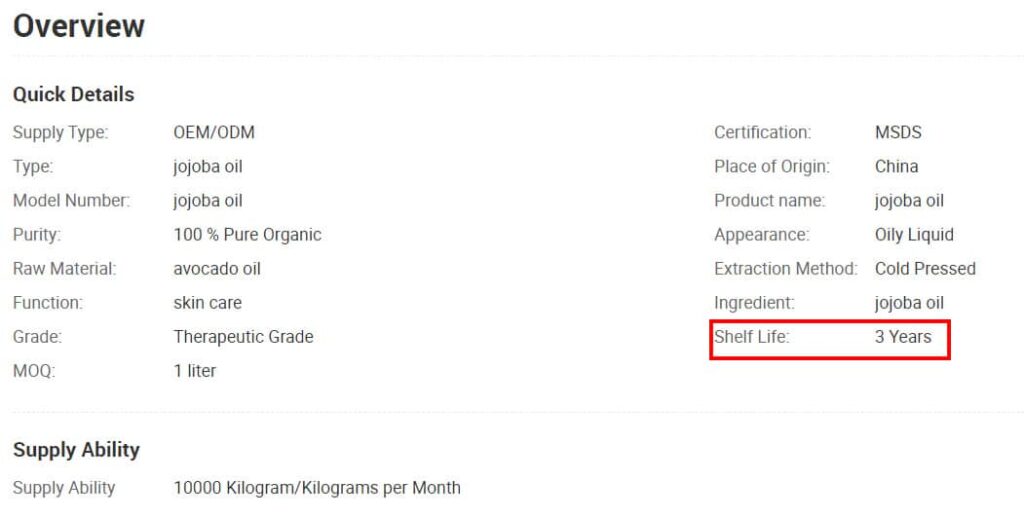
Argan Oil
Another popular base in beard oil is argan oil. The shelf life for this carrier oil was up to two years:
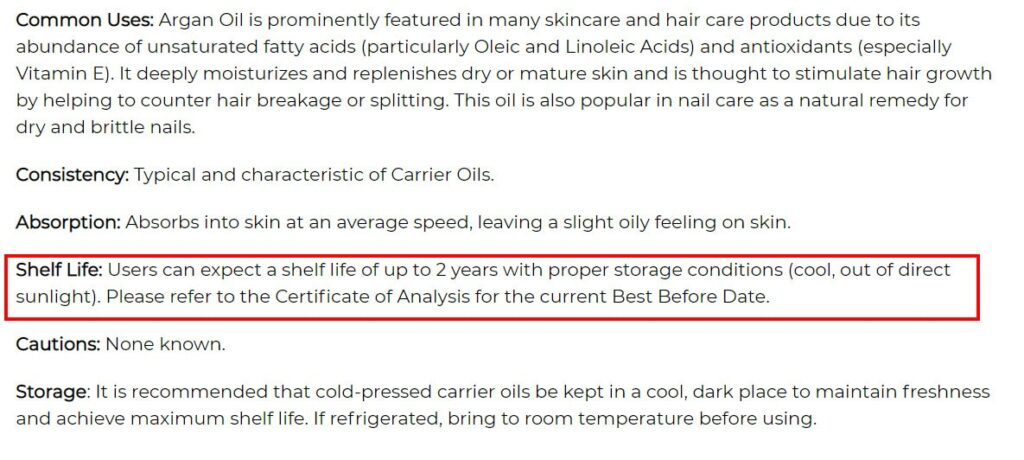
Grapeseed Oil
We found that grapeseed oil also had a shelf life of two years. But grapeseed oil was recommended to be refrigerated after opening:
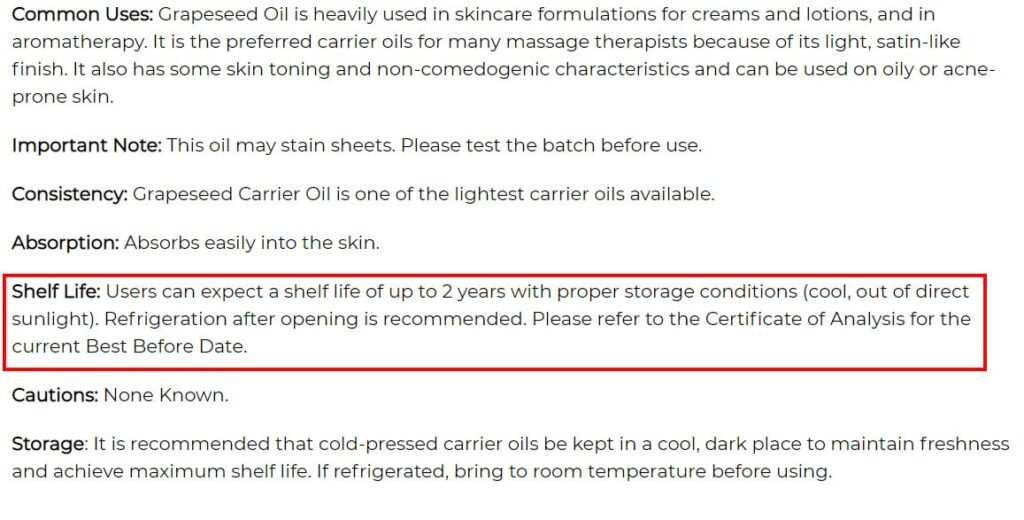
Sweet Almond Oil
Lastly, sweet almond oil had a shelf life of two years:
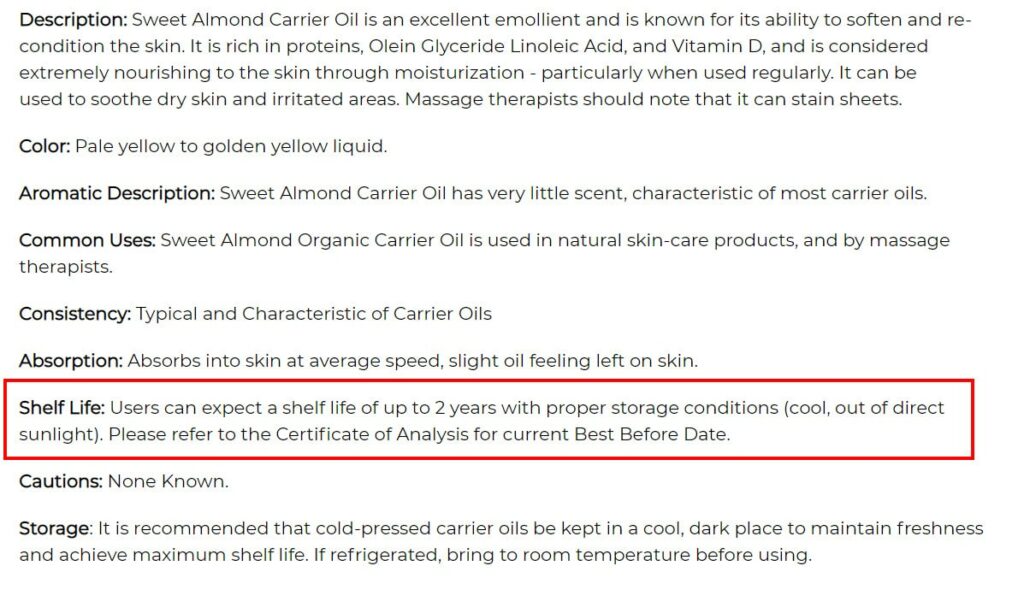
Coconut Oil
While not necessarily as popular as many other carrier oils when it comes to beard oils, balms, and more, coconut oil has an expected shelf life of two years:
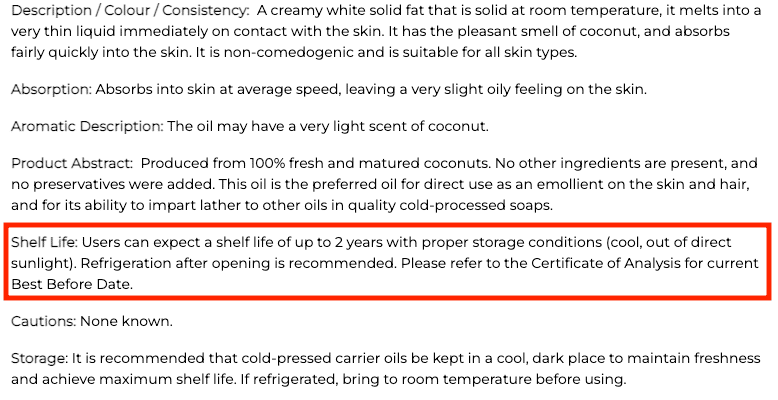
Essential Oils
Derived from seeds, roots, peels, nuts, leaves, and more, essential oils are a bit more complicated of an ingredient.
The shelf life for all the essential oils we researched was never disclosed. We looked up sandalwood oil, tea tree oil, eucalyptus oil, peppermint oil, lemon oil, and several others but had no luck in finding a finite shelf life from a reputable source. Therefore, we cannot definitively say how long you can expect this ingredient to retain its structure within a beard conditioner.
But we suggest putting little weight on the shelf life of essential oils as companies only add a small amount (a few drops) to any given beard conditioner. Essential oils are added primarily for fragrance.
Butter
Found in beard balm and beard butter, shea or cocoa butter provides malleability of the product and deep nourishment to the skin. In particular, shea butter has the shortest shelf life of one year when stored properly:
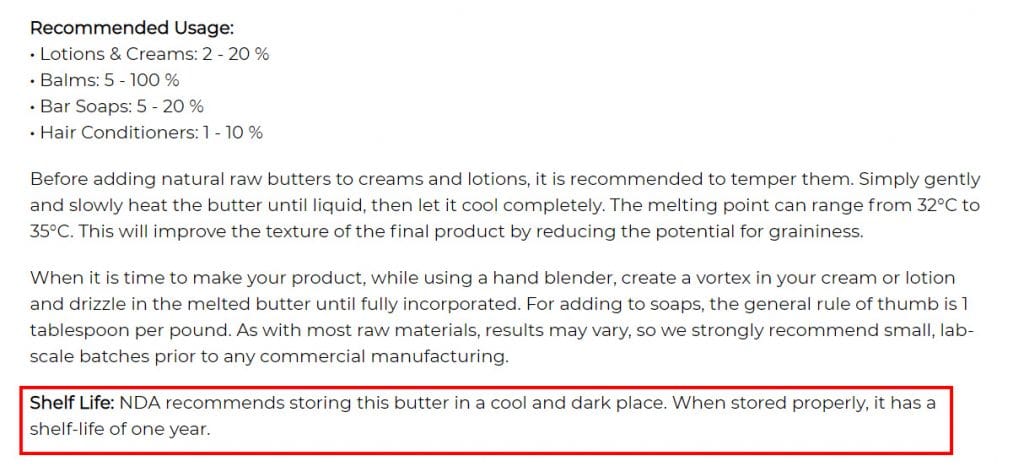
For another wholesaler, we found that cocoa butter has a shelf life of three years.
Beeswax
Beeswax, commonly added to beard balm for its protectant, humectant, and styling abilities has a shelf life of three years.
You can find this ingredient in beard balms and some beard butters.
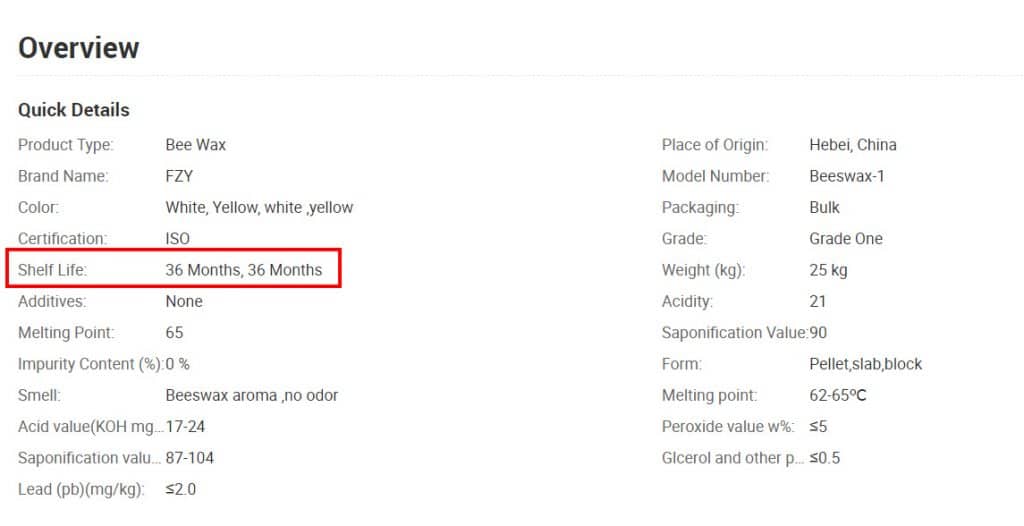
Ingredients are Only Half the Story
Given that we are dealing with a natural product, other variables such as storage and packaging become much more important. Here are a few things to keep in mind:
Packaging
Ideally, a beard conditioner should be stored in a glass amber bottle or metal tin. This packaging will help slow down the degradation process of the natural ingredients when exposed to direct sunlight or bright lights.
Some companies will also place their product in a cardboard product box for added protection during shipping.
Temperature Fluctuations
You may have noticed earlier that the raw ingredients found in beard conditioners should be stored in cool and dark places. Furthermore, some ingredients, such as grapeseed oil, are recommended for refrigeration after opening.
Unfortunately, most men store their beard conditioners (and other grooming products) in their medicine cabinet, an area subject to significant changes in both humidity and temperature due to the heat and moisture produced by the shower.
Oxidation
Natural ingredients are subject to oxidation. When oxygen is present, it will react with the natural ingredients in your beard conditioner. This reaction will cause the ingredients to deteriorate over time.
Each ingredient will oxidize at differing rates. For example, one study researched the oxidation of jojoba oil in relation to other lipids. Here’s what they found:
Jojoba oil shows good thermal stability up to a relatively high temperature. Generally, the cosmetic formulations containing jojoba oil have superior stability toward oxidation than other lipids used for this purpose. A comparative study of the relative oxidation stability of jojoba oil, sperm whale oil, carnauba wax esters, Limnanthes douglassi wax esters, and behenyl arachidate revealed that jojoba oil has high oxidative stability comparing all other oils [43].
https://www.ncbi.nlm.nih.gov/pmc/articles/PMC8197201/
Another study found that when exposing argan oil to the air, the oil deteriorated more rapidly (source).
The takeaway: Keep your beard conditioner well-sealed between each use.
Manufacturing Quality
Cosmetics are a loosely regulated industry resulting in little oversight of the manufacturing process. As a result, some beard conditioners might be made haphazardly.
While you may be diligent about storing your beard conditioner properly, it doesn’t mean that the company that made it was as careful.
Additionally, you have no way of knowing how long ago their big barrel of jojoba oil may have purchased.
The point is this:
There is little you can do here when it comes to due diligence, and you just simply need to take the companies word on the procedures in place. If anything, only purchase from trusted brands that likely have a high turnover and carry a positive reputation.
Signs Your Beard Conditioner Expired
Curious whether or not your beard oil or balm has expired? Here are a few signs to look out for:
- Smell: This one can be particularly tricky as the essential oils within the beard oil may mask any putrid scent. When giving your beard oil a whiff, smell for a rancid or mold fragrance. If not there, also just simply see if the scent isn’t as expected (i.e., a citrus beard oil now smells like burnt nuts), and you should throw it away.
- Consistency: More applicable to beard balms and beard butter, you want to have a product that isn’t brittle or has separated. So be sure that it feels smooth, pliable, and oily.
- Color: Most beard care products have a neutral to yellowish color. If the beard oil has turned brown or even black, then it is a sign that it has oxidized.
- Bacteria Growth: If you see any mold or fungal growth, particularly along the rim of the tin or bottle, then it is time to throw it away.
- Viscosity: Beard oil should have a water to oil-like texture. If it feels thick and sticky, then it has likely gone bad.
What Happens if You Use an Expired Beard Oil or Balm?
If you are tempted to give your expired beard conditioner a try, it does come with a few risks:
- Irritation or Rash: Applying an old beard oil that has spoiled may have bacterial growth in the product. If applied to the skin, it will likely cause a mild contact dermatitis.
- Free Radicals: An expired beard oil may have a high concentration of free radicals (unstable molecules). If you regularly apply them to the skin, free radicals may cause signs of premature aging – although this is debated (source).
- Potential Infection: If you recently cut yourself while edging with a razor, or have a small wound on your face, applying a spoiled product to your face may result in an infection.
Regardless of the associated risks, it is always a good idea to do a patch test before applying fully to your skin and beard.
How to Make Your Beard Care Product Last a Little Longer?
When trying to extend the life of any beard care product, there are a few things you might be able to control to help slow down the degradation process. This includes the following:
- Storage: Place your unused or partially used beard oil, balm, etc., in a cool, dry, and dark place. This will help to prevent temperature fluctuations or increased amount of water in the air that is present in the bathroom – both of which may hasten the life of the product. Some men may even place a desiccant pack in the container to help absorb any moisture.
- Don’t Use Multiple Products: A single bottle of beard oil or balm should last a couple of months. While it might be nice to rotate between different scents, if you aren’t diligent about your use, the products may go bad before you can finish them.
- Pay Attention to the Expiration Date: If you buy your beard care products from a reputable brand, then they likely have a “best by” date on the bottle or tin – don’t ignore it. If uncertain, send an email to the company and ask them when the product was made and when it should be used.
- Sanitary Practices; Beard oils are more sanitary than beard balms, given that they have a dropper applicator. This prevents bacteria from your hand from ever touching the product. When using beard balm, wash your hands before scooping out the product.
Wrap Up
Ultimately, a beard conditioner is a product that should be regularly used immediately after purchase.
We hope that this guide help to provide you with a better understanding of beard conditioners and their expected shelf life.